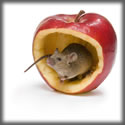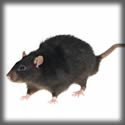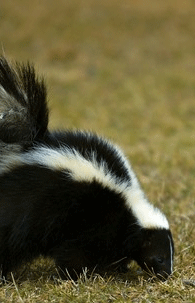Common Rodents
Mice
The most common mouse encountered inside structures is the House Mouse. They are not only a nuisance but can cause damage or contamination through chewing, urine or droppings. In addition, they can chew on electrical wiring, creating a fire hazard.Mice are prolific breeders, reaching sexual maturity in just over a month. They average about eight litters per year and females can have a new litter about every 40 -50 days. One female mouse will give birth to an average of 30 – 35 female mice in a year. In other words, it doesn’t take long for populations to get out of hand. Life expectancy for the House Mouse is generally about 1 year due to a number of factors but they can live up to 6 years.Contrary to popular belief, the mouse’s favorite food is not cheese. In fact, this belief is so common; there are even snap-traps available with triggers that resemble yellow cheese. While these color-blind rodents will eat just about anything from frozen meat to fruits, they prefer nuts and seeds. Over a one year period, a mouse will eat approximately 4 pounds of food, produce about 18,000 droppings, and void about 12 ounces of urine. Their droppings can transmit organisms such as tapeworms and infectious jaundice, as well as indirectly transfer illnesses or irritations from the mites or fleas that travel on the mouse. (Image © Photowitch/Dreamstime.com)The Shoreline Solution: Mice are excellent climbers and often infest an attic after gaining access to wall voids from ground level. They can also find many places to nest in basements. Control generally consists of trapping mice in these key areas, using a variety of traps. Poison baits are generally avoided in a home setting due to potential accidental poisoning of children or pets and the likelihood of mice dying where their decomposing bodies cannot be reached. A minimum of 3 visits is generally needed.

Rats
The most common rat in this part of the country is the Norway Rat. Like the mouse, Rats damage and destroy property by gnawing, eating and defecating. Rats are also responsible for transmission of a variety of diseases.Considerably larger than a mouse, the rat is generally about 12 to 14 inches from head to tip of the tail. They can weigh anywhere from about 7 to 18 ounces. Unlike the house mouse, rats are generally found outdoors in burrows commonly dug next to buildings or in earthen banks. Their fur is thick and oily which often leaves a tell-tale stain when entering or exiting a particular area. They are largely nocturnal and quite cautious.Rats are not as curious to try new foods as the mouse, often avoiding poison bait for a period of time. They prefer meat, fish and animal proteins found in items such as pet food.Rats reach sexual maturity in 2 to 5 months, having an average of 3 to 6 litters per year. Norway rats generally live to about one year but can live much longer under ideal circumstances.
Rats are generally associated with filthy or poverty conditions but are plenty happy living elsewhere if food and water are readily available. They can transmit a variety of diseases such as typhus (through fleas on the body), infectious jaundice, trichinosis and salmonella.
The Shoreline Solution:
Due to their cautious behavior, rats can be tricky to get under control. Traps and poison baits need to be placed very carefully after extensive inspection and planning. (Image © Kirill Zdorov/Dreamstime.com)






